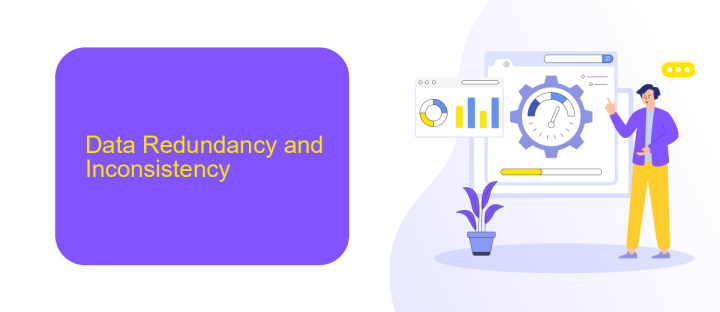Disadvantages of Data Integration
Data integration, while essential for unified data management and streamlined business processes, comes with its own set of challenges. These disadvantages can range from high implementation costs and complex maintenance to data security risks and potential loss of data integrity. Understanding these drawbacks is crucial for organizations to make informed decisions and effectively manage their data integration strategies.
Increased Complexity
Data integration can significantly increase the complexity of an organization's IT infrastructure. As multiple data sources are combined, ensuring compatibility and seamless interaction between disparate systems becomes a challenging task. This complexity can lead to several issues that organizations must address to maintain efficient operations.
- Increased demand for specialized skills and expertise
- Higher likelihood of data inconsistencies and errors
- Greater need for comprehensive monitoring and maintenance
- Potential performance bottlenecks due to system interdependencies
Furthermore, the process of setting up and maintaining data integrations often requires sophisticated tools and platforms. Services like ApiX-Drive can help streamline this process by providing user-friendly interfaces and automation capabilities. However, even with such tools, organizations must invest time and resources into training and ongoing management to ensure the integrated systems function smoothly. The added complexity necessitates a strategic approach to integration, balancing the benefits of unified data with the challenges of maintaining a complex IT environment.
Data Redundancy and Inconsistency

One of the primary disadvantages of data integration is the issue of data redundancy and inconsistency. When multiple systems are integrated, the same data may be stored in different locations, leading to redundancy. This redundancy not only consumes additional storage space but also complicates data management. Inconsistent data can arise when updates are made in one system but not reflected in others, resulting in discrepancies that can affect data accuracy and reliability.
Tools like ApiX-Drive can help mitigate these issues by streamlining the integration process and ensuring that data is synchronized across all platforms. ApiX-Drive automates data transfer and updates between systems, reducing the chances of redundancy and inconsistency. By providing a centralized solution for data integration, it ensures that all connected systems have access to the most current and accurate data, thereby enhancing overall data integrity and operational efficiency.
Time-Consuming and Costly

Implementing data integration can be a significant challenge due to its time-consuming and costly nature. Organizations often face prolonged timelines and substantial financial investments to ensure seamless integration across various systems and platforms.
- Initial Setup: Establishing the infrastructure for data integration requires extensive planning, configuration, and testing, which can be both time-intensive and expensive.
- Maintenance: Continuous monitoring and updating of the integration system to handle new data sources and changes in existing ones demand ongoing resources and financial commitment.
- Specialized Skills: Hiring or training personnel with the expertise in data integration technologies adds to the overall cost and time required for successful implementation.
Despite these challenges, tools like ApiX-Drive can significantly streamline the process. ApiX-Drive offers automated data integration solutions that reduce the time and cost associated with manual setups and maintenance. By leveraging such services, organizations can achieve efficient data integration without the extensive resource drain typically involved.
Security and Privacy Concerns

Data integration, while beneficial, brings significant security and privacy concerns. Integrating multiple data sources can create vulnerabilities that malicious actors might exploit. Ensuring that all integrated systems comply with security standards is a challenging task.
Moreover, data integration often involves the transfer of sensitive information across different platforms, increasing the risk of data breaches. Unauthorized access to integrated data can lead to severe consequences, including identity theft and financial loss.
- Increased risk of data breaches
- Challenges in maintaining consistent security protocols
- Potential for unauthorized access to sensitive information
- Compliance with data protection regulations
To mitigate these risks, it is crucial to utilize secure integration services like ApiX-Drive. ApiX-Drive offers robust security features that help ensure data integrity and confidentiality during the integration process. By leveraging such services, organizations can better protect their data and maintain compliance with relevant regulations.
Technical Challenges
One of the primary technical challenges in data integration is ensuring data consistency and accuracy across different systems. When data is pulled from multiple sources, discrepancies can arise due to differences in data formats, schemas, and update frequencies. These inconsistencies can lead to inaccurate analytics and decision-making. Additionally, handling large volumes of data in real-time requires robust infrastructure and efficient algorithms, which can be complex and costly to implement.
Another significant challenge is the integration of legacy systems with modern platforms. Older systems may lack the necessary APIs or support for current data standards, making seamless integration difficult. Tools like ApiX-Drive can facilitate the integration process by providing a user-friendly interface to connect various applications and automate data workflows. However, even with such tools, ensuring secure data transfer and compliance with regulatory requirements remains a critical concern that requires continuous monitoring and updates.
FAQ
What are the primary disadvantages of data integration?
How does data integration impact data security?
What are the potential costs involved in data integration?
Can data integration affect system performance?
Are there tools to simplify the data integration process?
Time is the most valuable resource in today's business realities. By eliminating the routine from work processes, you will get more opportunities to implement the most daring plans and ideas. Choose – you can continue to waste time, money and nerves on inefficient solutions, or you can use ApiX-Drive, automating work processes and achieving results with minimal investment of money, effort and human resources.

